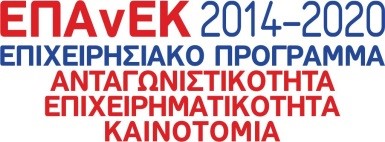10 steps to accelerate the Contract Management lifecycle

Contract management is a critical function of the company, as it determines the relationship of each organization with customers, suppliers, staff, and partners.
In particular, effective contract management enables any organization to:
- Regulate its costs.
- Avoids financial and legal risks.
- Gains the greatest possible benefit from each deal.
For most businesses, however, contract management is a factor of risk, delays, and increased operating costs. The reason for this is because contract management often requires:
- a thorough study of a large amount of information
- cooperation between several people from various departments
- constant monitoring of the obligations of each party for the smooth execution of each contract
In a study by the international organization World Commerce & Contracting, it is stated that 92% of the time dedicated by businesses to contract management is spent on procedural and administrative activities. Aberdeen consultants record that the average time from creation to signing a new contract is 30 days.
The good news is that this procedure can be reduced in 10 simple steps, leading to a significant reduction in operating costs. At the same time, the risks of long delays and failures are also reduced. Finally, a significant improvement in the agility and efficiency of the entire organization is achieved.
In each of the phases of the contract life cycle, from the processing, approval, and signing to the execution, termination, or renewal, the right tools can operate as a multiplier for the efficiency of staff, who will focus more on essential work and less on managing bureaucracy.
Quick and Easy Access to contracts and related documents
If we start counting the time wasted every day in contract management, we will surely think of searching for the latest version of a contract in the office cupboards or even in old correspondence with the contractor. This time period is multiplied when we want to find information on negotiation history and contract attachments such as price lists, brochures, quotations, and related appendices
Indeed, Gartner consultants confirm that 50% of staff time in the office is spent searching for information and documents, rather than doing actual productive work. At the same time, to finally find the document we want the search takes an average of 18 minutes.
It is easy to imagine the improvement in staff efficiency if these times were reduced by even half. Quick and easy search and retrieval of contracts and related documents from a central point by typing the contractor’s name, type, or even keywords within the contract text not only saves staff time overall but can even speed up problem-solving and ultimately the entire operation of the organization.
Versioning
So far, we have talked about searching for the final contract. However, we know that there is often a need to find not only the signed version but also previous versions in open format. The reasons are that it may be necessary either to reuse parts of it in new documents or to study thack changes and negotiation, in case of error or disagreement with the contractor.
That’s when we realize that there is no hope of finding exactly what we want without the help of our partners. Therein lies another major delay factor. We will have to exchange a series of messages to explain to our partners exactly what version we want and hope that each one diligently maintains its own archive in a way that is comprehensible to us.
Ultimately it is almost impossible without a version tracking tool to get a comprehensive picture of what changes have been made, when and by whom. We end up wasting days in search or settling for incomplete information.
Remote Collaboration
Even before the COVID-19 pandemic, staff collaboration in writing, negotiating, approving, and monitoring each contract had already moved from conference rooms to email correspondence. It was then obvious that each employee needed to be able to organize his or her own time more efficiently. So now draft contracts are passed via email from office to office and back with changes, comments, and attachments.
The lack of structure and automation of email carried the chaos of paper to the user’s inbox. Eventually, delays and failures persisted, as each employee, in order to make a decision, is forced to devote daily time to:
- maintenance of its personal archive
- search through excessive email threads
- comparing different attachments and gathering information from third-party archives
It is now essential to use modern tools for remote staff collaboration in contract management.
A central point is needed where users can quickly and easily edit the contract, comment on it, and track the actions of their partners and their related tasks.
Clear Definition of Responsibilities
It is a fact, that as an organization grows, contracts proliferate. At the same time, responsibilities are spread across the different departments of the company, at different levels of management, and also depending on the responsibilities and interests of each individual employee.
Custome contracts are often monitored by salespeople, account managers, and accounting.
Supplier contracts are monitored by the procurement department, while different departments often enter into their own agreements with third-party suppliers and partners.
Without a consistent and structured division of different responsibilities and ownership for each contract, we end up wasting time searching for the right partner within the company to solve problems that arise in different phases of the contract life cycle.
In addition, the responsible parties are not always informed of any changes, significant deadlines, or problems in contract compliance. Ultimately, decision-making is transferred to the highest levels of management, where a large backlog of tasks and delays is created. Still, the same happens when we do not know the persons on the side of the contracting organization.
In a modern contract management system, the contract case is followed by a series of roles that define the responsibilities of the Requester, Owner, Account Manager, Editor, Approver, etc. Also added to the same flow are the contacts of the contractor’s competent persons, in order to ensure the smooth development of the contract life cycle, as well as the quick settlement of relevant issues.
Document automation with templates
Depending on the type of each contract, the homogeneity of contracts is the only solution for scaling up agreements as the business grows.
The common practice of organizations is to initially use older contracts as drafts of new ones and then create model contracts to speed up the writing of new agreements. Considerable time is spent on creating, updating, using, and maintaining these templates. Often errors occur, which in the worst-case scenario expose the company to risks due to the use of non-updated templates or lead to the organization’s processes being hampered.
How can the author create a new draft contract in a few seconds?
Leveraging template management and automated document generation technologies from templates. The author selects the type of contract and then simply types in the contractor’s details and key parameters of the agreement. At the same time, it can be automatically updated for each change of the template to avoid failures.
Standardization & Automation of Approval Processes
Approving the wrong contract poses great risks to the organization. For this reason, the approval process is taken very seriously by all staff involved. However, delays and points of major congestion often arise in the managers’ offices due to:
- Confusion in the allocation of responsibilities
- Conflicting views
- Lack of standardization of internal procedures
The balance between risk avoidance and flexibility is often achieved by standardizing rules, policies, and contract approval procedures. Thus, depending on the amount, category, and type of contract, the responsible auditors and approvers are informed and involved at critical points before signing.
Proper organization and compliance with these processes, however, without process automation design tools is a management nightmare. Keeping all relevant parties informed, monitoring the status of approval, and properly documenting the progress of each contract leads to a steep increase in operational costs and frustrating delays.
For all the above reasons, another bold step towards speeding up contract management is the adoption of technology to automate approval processes. The goal of automation is for the contract to go automatically, serially, or in parallel to all necessary roles and levels of management based on prescribed rules for review, additions, changes, and final approval. This frees management staff from low-value actions (copies, dispatches, reminders, step documentation, reports, excel statements). Ultimately the contract approval time is significantly reduced.
Μobile Approvals
However, no matter how much we modify and automate the processes of a company, there are still obstacles that can undo all the effort to organize and increase productivity. Often, we hear the expression “the manager is away on a business trip and will approve/sign the contract as soon as he returns”. This phenomenon can be a cause of, among other things, delaying a project, reducing the likelihood of closing a deal, or losing a discount
But because the solution is not for executives to travel with copies of all the office files or to keep on their personal computer, their own, uninformed files, there’s only one thing to do. The office must now be accessible from mobile devices and tablets.
Senior managers should be able to proceed with contract approval procedures remotely, with the necessary documents at their fingertips at all times. At the same time, they will be able to comment on and approve contracts, especially when the organization is pressed by critical deadlines
Digital Signatures
Coming to the contract signature phase, so far the delays have been related to external factors. For example:
The distance of the contractor, the speed of courier services, and the need for the physical presence of the contractors, i.e., the necessary staff from the organizations involved, made it impossible to speed up the process.
However, as technology evolves and even more so, as the legal framework worldwide and in Greece expands, digital signatures are here to stay.
Now we can reduce the time to sign the contract from days to minutes. At the same time, we have the ability to upgrade our organization’s protection against fraud and other malicious actions.
With digital signatures, we achieve significant acceleration, increased security, and cost reduction at a high level. Ultimately, no organization can sit idle any longer due to the traditional physical signatures.
On the contrary, those who are aware of new developments in the global, European, and local markets understand that speed in adopting digital signatures is a critical competitive advantage for any business.
Deadline and milestones monitoring
Moving on to the phase of contract execution, termination, or renewal, critical management action is to monitor the deadlines that are contractual obligations. Unfortunately, this management is also scattered and is usually left to the personal organization of each responsible person. Between long excel statements, outlook reminders, and sticky notes, valuable time is lost. In addition, the risk of missed deadlines is not effectively reduced.
Keeping track of deadlines permanently ties up a large part of staff time when they work in combination. In other words, to fulfill contractual obligations, several departments with different responsibilities must collaborate.
The rendition of each contract in a modern contract management system, in addition to the basic parameters of the agreement, should reliably include:
- Tasks
- Milestones
- Notifications about deadlines
In this way:
- Monthly reporting is done faster
- Failures are prevented
- All parties involved can make timely decisions and plan their time efficiently
KPIs
Leading management consultant Peter Drucker is also widely known for the expression:
“You can’t improve what you can’t measure”
Indeed, we need to know the pain points where the biggest problems and delays occur. In this way, we can prioritize which improvement actions are necessary.
KPIs, which stand for Key Performance Indicators, allow us to monitor measurable data on the organization’s performance so that we can discover problem areas and intervene with the necessary corrective actions.
Initially, by “translating” and recording the key features of the company’s agreements, we gain an overview of the organization’s obligations, priorities, risks, and opportunities before they are reflected in the financial statements. Some examples of useful indicators for quick decision-making are:
- Annual contract value
- Expiring contracts value
- Deviations of invoices from contracts
- Contract cancellations
- The average contract compliance rate
At the same time, the digitization and automation of the contract management cycle allow the company to measure performance directly from the completion times of the different phases of the contract life cycle. Indicators such as Average Approval or Signing Time, Percentage of Digitally Signed Contracts, and Renewal Times help us discover bottlenecks where more staff or process change is needed.
Conclusion
Accelerating the contract lifecycle means improving the process and increasing efficiency throughout the organization. The faster we process the organization’s contracts, the faster these processes are accelerated:
- sales
- payments
- procurement
- staff recruitment
- project execution
For this reason, the Papyros ECM platform has been designed to include all the necessary tools that the company needs to automate the management of its contracts. The aim is to drastically reduce operational costs and upgrade the working environment.
After 25 years of experience in the contract management industry, Modus provides the necessary expertise to lead its customers gradually through the above 10 steps at a low cost to the business and an immediate return on investment.



